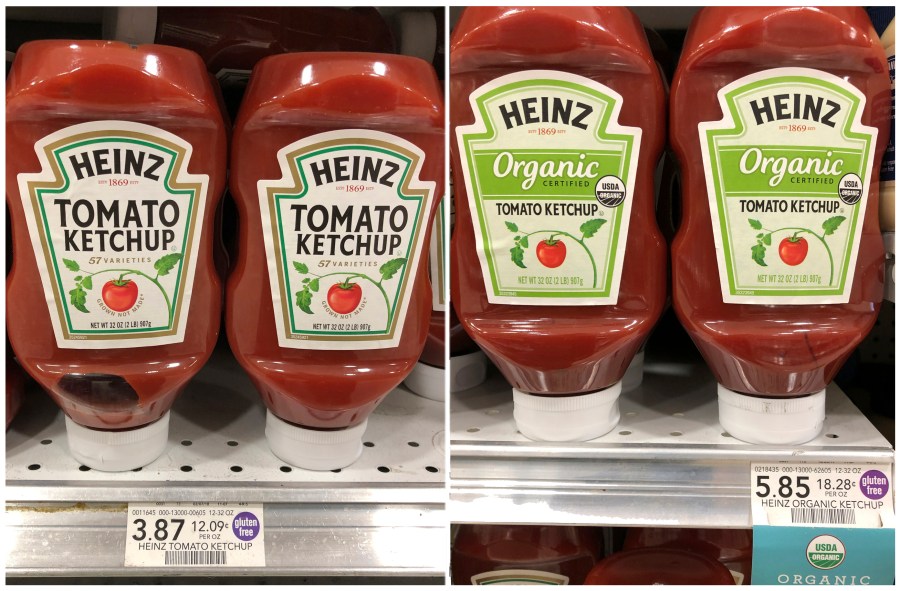(NEXSTAR) – The price of just about everything is going up right now. Sometimes it’s obvious – like at the meat counter or the car dealership – and sometimes it’s more subtle, like in the grocery store aisles.
That’s because in lieu of raising prices, many manufacturers are choosing to shrink packaging instead – a trend called “shrinkflation.” General Mills got called out for doing it to their family-sized cereals, downsizing the boxes from 19.3 ounces to 18.1. Tillamook owned up to making their tubs of ice cream 8 ounces smaller. Each roll of toilet paper you buy may have fewer sheets than it did a year ago. That jug of orange juice now suddenly has a larger cut-out that makes up the handle.
“It is a real form of inflation,” said Bailey Norwood, head of Oklahoma State’s Department of Agricultural Economics. “The price is going up, but the price tag you see in the grocery isn’t going up, the quantity is going down. … I understand how people wouldn’t like it because it does seem kind of sneaky.”
If you’re grocery shopping on a tight budget and are trying to avoid getting duped by shrinkflation, make sure you’re calculating the per-ounce price of goods. That could involve whipping out the calculator, but often the grocery store will do the work for you – just read the smaller print on the store’s price label.

While shrinkflation may seem like a money-grab by companies, tricking people into spending more, Norwood said it could be the lesser of many evils among continued supply chain disruptions, shipping container delays and shortages.
“The companies have to do something. They realize they can’t supply the normal amount at the normal price,” he said. “Something’s got to give.”
To cope with rising costs, companies are essentially left with three options, Norwood said:
- Manufacture and package everything exactly the same and raise the price. This may be the most straightforward option, but it could end up pricing out some customers altogether.
- Lower the quality of ingredients to lower the cost of producing the good, and keep the price lower. But in this case, the brand’s reputation could be at stake, and customers end up with a lower-quality product.
- Ration the product, so you can keep the product on the market but just at smaller quantities. This is the shrinkflation option.
“You have to ask yourself what’s better: A little less cereal in the boxes, or 5% of people are going to encounter stock-outs?” Norwood said.
As things return to normal eventually, will prices go back down? No one knows, Norwood admitted.
“I’m sure there are some of these manufacturers that are going to keep the lower product volume the same,” he said, before finding a silver lining: “Another thing is, some of this stuff – especially if it’s junk food – it’s probably better if we had a little less of it.”

